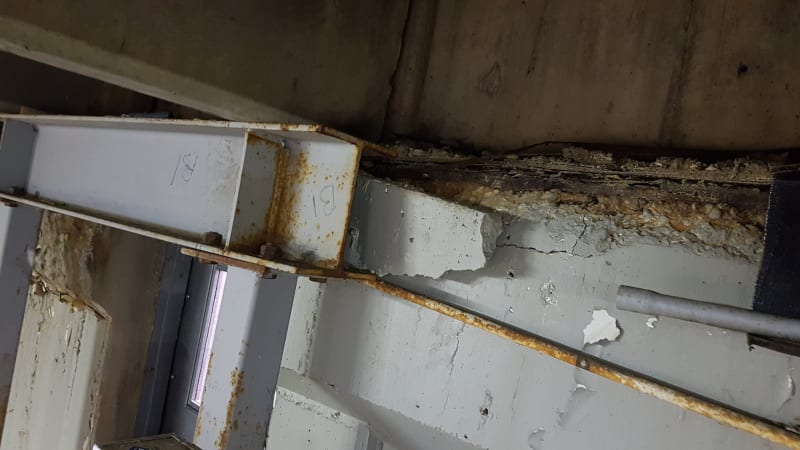charliealphabravo
Structural
- May 7, 2003
- 796
I've encountered these prestressed double T-beams (60ft span, ~36" deep legs) that have cracks at the bearing. They have experienced long-term water intrusion and corrosion of the bearing pads/embeds/reinforcement. There is also corrosion and spalling of the cast-in-place corbel and bearing plate embeds as you can see and some poorly executed shoring.
Does anyone know if the prestressing strands will be harped or if they will be straight through the bottom chord? I have several concrete repair resources but I don't think I have ever seen a repair for this particular situation. I won't be on for the repair but I'd like my recommendations to be informed.


TIA
Does anyone know if the prestressing strands will be harped or if they will be straight through the bottom chord? I have several concrete repair resources but I don't think I have ever seen a repair for this particular situation. I won't be on for the repair but I'd like my recommendations to be informed.


TIA
